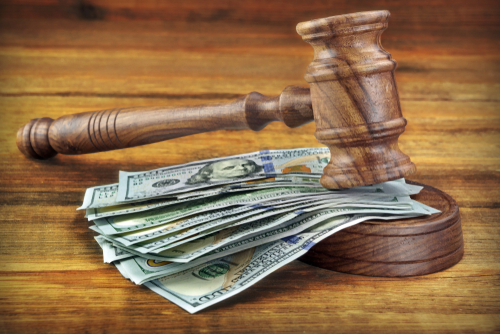Four Factors to Consider When Deciding Whether to Use Trade Secrets
“The question is not whether your trade secret will become common knowledge at some point, but rather, whether you can keep it secret long enough to have derived enough value from a cost-benefit viewpoint.”
It is hardly an exaggeration to say that pretty much every business of every size possesses information that would qualify for trade secret protection. This is because under federal law the term “trade secret” is defined very broadly to capture virtually all types of tangible or intangible information. Specifically, the Defense of Trade Secrets Act (DTSA), which became law in 2016, defines trade secrets to include “all forms and types of financial, business, scientific, technical, economic, or engineering information, including patterns, plans, compilations, program devices, formulas, designs, prototypes, methods, techniques, processes, procedures, programs, or codes”. 18 U.S.C. 1839(3). Regardless of how the information is stored, the information qualifies as a trade secret if the owner has taken reasonable measures to keep the information secret, and the information is valuable because it is not generally known and readily ascertainable through proper means. See 18 U.S.C. 1939(3)(A) and (B).
With such an expansive definition it is easy to see how every company could have information that would qualify to be a trade secret. And trade secrets are often correctly associated with information possessed by high tech companies, but things every business possesses can qualify for protection, including but certainly not limited to customer lists, pricing strategy, supplier information, budgets, and much more. Of course, valuable business information only qualifies as a trade secret if at least some reasonable effort is undertaken to preserve secrecy, and only for so long as the information remains secret.
Despite the fragility of trade secrets, which could literally cease to exist at any moment upon the secret being let out, trade secrets are an important part of any intellectual property portfolio. This is because trade secrets are available to protect innovations for which a patent could never be obtained, such as is the case with certain software innovations—particularly certain artificial intelligence (AI) related inventions and fintech methods, procedures and software, as well as some life science related breakthroughs, including diagnostics.
Indeed, no matter how new and useful fintech software may be, if it relates to payments and money changing hands, patent protection is unlikely to be obtained—and if it is obtained it will easily be defeated upon challenge. Similarly, no matter the magnitude and importance of a diagnostic breakthrough, if the breakthrough relies on identifying natural phenomena, the likelihood of obtaining patent protection is extraordinarily low, and if a patent is obtained it will similarly be quite easy to defeat when challenged. Thus, for many high-tech companies, patent protection is simply not available in the United States. So, why even bother going through the academic exercise of trying to obtain a patent? It is a waste of time and money, and the attempt to obtain a patent results in much valuable information needlessly being donated to the public through disclosure in a patent application that never had any realistic shot from the start.
Trade secrets are also preferred even in situations where a patent could be obtained if the innovation presents only marginal or incremental value, if the secret is unlikely to be learned by competitors within the usefully relevant and exploitable timeframe, or when the budget requires focusing patent protection on other more important innovations, such as those directly relating to products being sold. So, as useful and important as trade secrets can be, when you need perfected patent rights that grant ownership a trade secret will simply not suffice.
Notwithstanding, businesses routinely make decisions every day on whether to pursue a patent or to protect an innovation or other valuable information with a trade secret. Sometimes these decisions are intentional and purposeful, and many times the decisions are ad hoc and ill-informed, to be polite. Other times businesses do not make any conscious choice because they fail to understand the importance of trade secret protection, the limits of trade secret protection, or even the requirement that some reasonable effort be undertaken to preserve the secret in the first place. Sadly, trade secrets get far less attention than patents, and misconceptions and misunderstandings abound. Merely wishing something to be a trade secret is no more useful than wishing you had a patent. At least some effort is required.
So, how do you decide whether a trade secret will suffice or whether patent protection is desirable? Aside from the scenario where U.S. patent law simply does not afford protection to the class of innovation involved (i.e., software or medical diagnostics), there are a variety of factors to be considered, including:
1. Value of the innovation.
Patents are not free, or cheap. Obtaining a worthwhile patent requires expenditure of capital and great effort. While it may be relatively cheap and easy to obtain protection on a kitchen gadget or tool that will be sold in a hardware store, expectations of the U.S. Patent and Trademark Office (USPTO) and judges evaluating issued patents after the fact are inversely related to the simplicity of the invention. A simple invention gets very little scrutiny, is easy to obtain, and consequently patent protection can be obtained relatively inexpensively, comparatively. For a sophisticated innovation that represents a significant scientific breakthrough, much greater scrutiny is given by the USPTO, the obviousness threshold is very high, the level of description must be rather extraordinary, and consequently worthwhile patent protection cannot be obtained without spending significant amounts of time and money. Arguably, it should be exactly reverse, with it being much harder to obtain a patent on something simple, even stupid, and much easier to obtain a patent on something significant, but that is not reality.
A realistic estimate of the cost of obtaining the patent must be considered when determining whether to seek a patent or defer to a trade secret. Similarly, once a patent has been granted the patent owner will need to pay an issue fee and then a series of ever-increasing maintenance fees to enjoy the full patent term (which most inventions do not realize). Of course, even with the expenses associated with obtaining and keeping a patent, if the patent covers a lucrative product line, it can easily make sense from a cost-benefit perspective. But if the innovation is of marginal or incremental value, the expense of a patent can easily outweigh the benefit received.
2. Reliability of the patent grant.
As already discussed, even if you can obtain a patent on certain innovations, no matter how new and useful it is unlikely they could survive any challenge in federal court. This means that one must consider how likely it is that the patent can be relied upon as a property right, because if the patent can be easily challenged all you did was describe the innovation and donate it to the public without receiving any benefit. And the reliability of the patent grant must be a consideration that goes beyond whether the innovation is patent eligible under 35 U.S.C. 101 and must also consider how easy it will be to challenge as lacking novelty under 35 U.S.C. 102, or more likely as being obvious under 35 U.S.C. 103. So, even if the invention is patent eligible, is the point of novelty great enough or will the claim be so fragile it is likely to be defeated if challenged. And this question requires at least some multi-factor consideration about (1) who the likely infringers are, (2) how widespread the infringement will likely be, and (3) the likely damages.
If giant tech companies are or will engage in widespread infringement that will result in a large amount of damages, you can rest assured that rather than pay the first impulse will be to seek to invalidate the patents. And the larger the amount at stake the more that will be spent to invalidate, which means the point of novelty will need a much wider threshold to withstand the onslaught. Of course, if you have enough infringed patents, the amount of money that infringers will need to be spent to challenge all of the infringed patent claims can be so great that pursuing an invalidation strategy ceases to make sense. Of course, that level of patent protection is not only not cheap, but also extremely expensive.
3. Length of time.
Without paying to accelerate an application to the front of the line, obtaining a patent can take many years. It is not uncommon for it to take several years before the patent examiner even picks up the application for a first substantive review, and several more years for a patent to issue. In some areas, particularly technology areas where the law has been in flux and there is some disagreement as to whether and when a patent should issue, it can take five years or more to obtain a patent, particularly in those situations where an appeal to the Patent Trial and Appeal Board (PTAB) can be anticipated because you know it is unlikely a patent examiner will grant worthwhile protection, or agree to any protection whatsoever. Thus, patent protection does not make sound economic sense if the innovation has a short shelf-life.
4. Likelihood secrecy can be maintained.
It is unrealistic to think that valuable information can be maintained in secret forever, and innovations are no different. It is true that there are several high-profile secrets that have been maintained as trade secrets for many decades, such as the formula for Coca-Cola. But as the story goes, the formula for Coca-Cola is known by only a few individuals and kept in the most secure vault ever created. And, Coca-Cola has been known to engage in various levels of subterfuge over the years, which has operated to create a mystery—even a mythology—around the formula. Few companies are able to run the sophisticated counter espionage campaign of Coca-Cola, so you would do wise to assume the Coca-Cola story is the exception and not the rule, because information wants to be free and, in a world where the Federal Trade Commission (FTC) has done away with noncompete agreements, information, including trade secrets, will find a way to be free and become known.
The question is not whether your trade secret will become common knowledge at some point, but rather, whether you can keep it secret long enough to have derived enough value from a cost-benefit viewpoint.
A Careful Calculation
Obviously, the factors mentioned above lend themselves to a sliding scale analysis. How much of the value of the innovation will you be able to extract by treating the innovation as a secret is the ultimate question to ask and solve for. The answer must be reached after considering the likely cost, reliability of any patent, length of time it will take to obtain the patent, and how long the secret can likely be maintained. As with many important business decisions, the ultimate conclusion is not binary. And sometimes the answer will be obvious, while other times it will be a much closer call.






